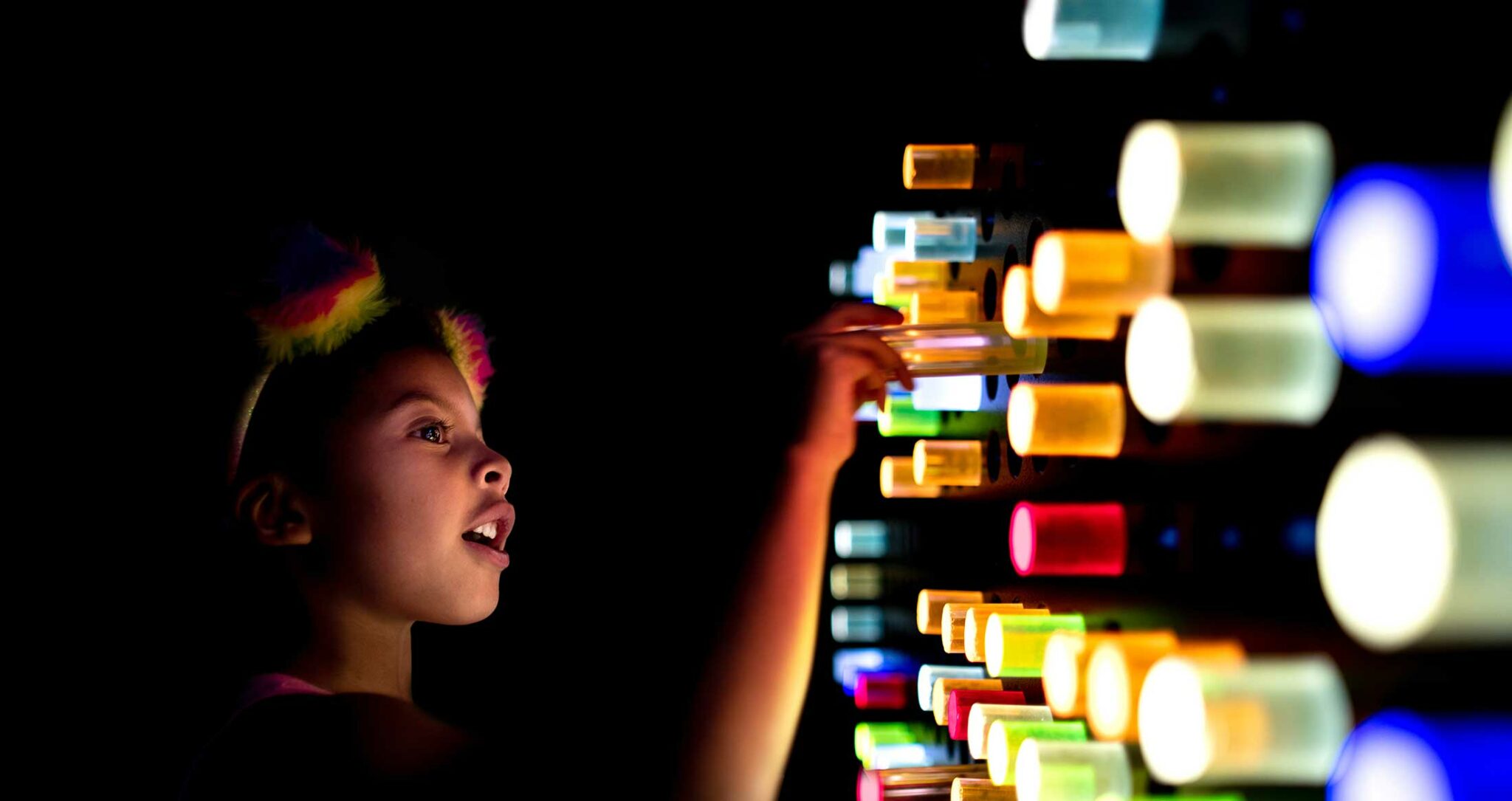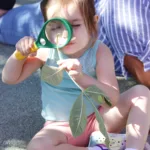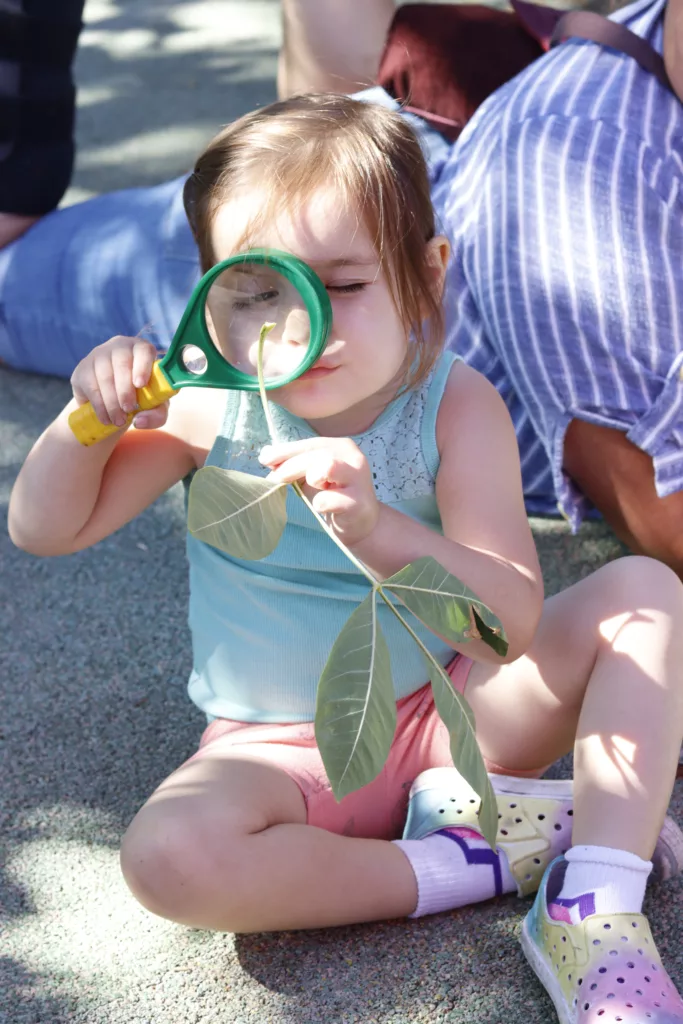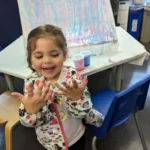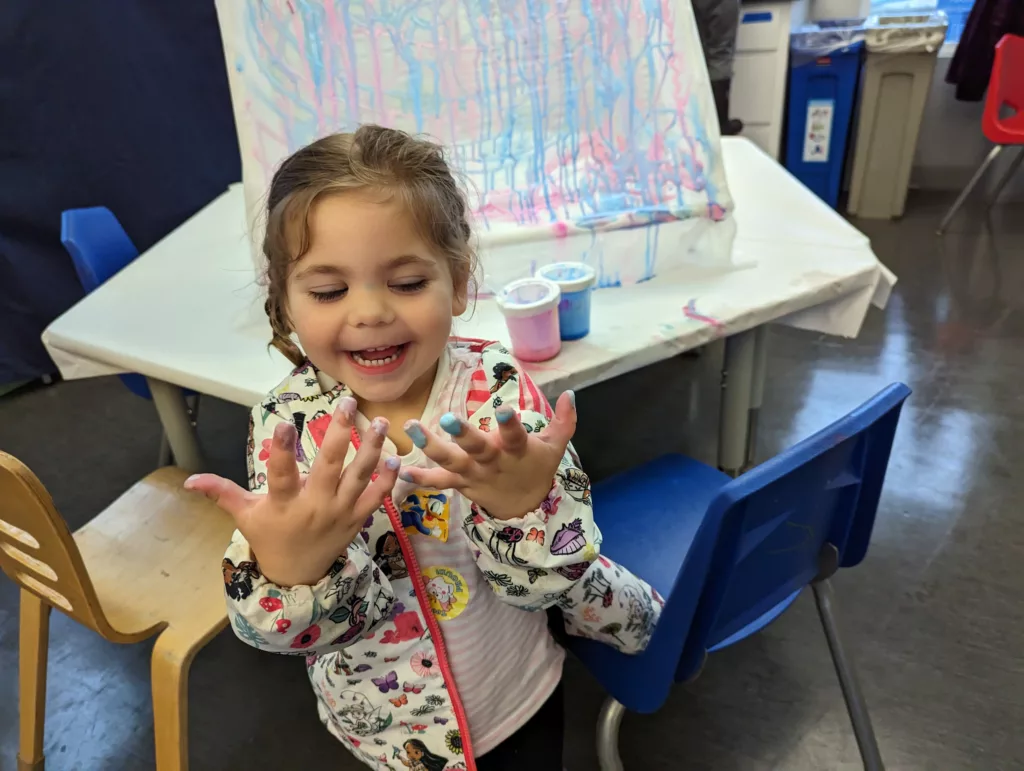Developmental Perspectives of Cognition and Play
By Bernice Callahan,
Board Member, Founder of California Parenting Institute, and Former School Teacher
The Toddler
Toddlers are consumed with curiosity. Their boundless energy and insatiable inquisitiveness provide them with resources for the tremendous cognitive growth that occurs during this period. Toddlers between 12-18 months are in Piaget’s sensorimotor period. Learning in this stage occurs mainly by trial an error. Toddlers spend most of their busy day experimenting to see what will happen as they dump, fill, empty, and explore every accessible area of their environment. Between 19-24 months, the child enters the final stage of the sensorimotor period. Object permanence is firmly established by this age. The child has a beginning ability to use symbols and words when referring to absent people or objects and begins to solve problems mentally rather than by repeating an action over and over. A toddler at this stage is often seen imitating the parent of the same gender performing household tasks. They also imitate the parent who has left for work by putting on make-up or shaving when the parent is absent.
Many hours each day are spent putting objects into holes and smaller objects into each other as the child experiments with sizes, shapes, and spatial relations. Toddlers enjoy opening drawers and doors, exploring the contents of cabinets and closets, and generally wreaking havoc throughout the house.
According to Piaget, the preoperational stage of cognitive development characterizes the second half of early childhood. This stage is divided into two phases: the preconceptual phase (2 to 4 years) and the intuitive phase (4 to 7 years). During the preconcptual phase, the child is beginning to use symbolic thought—the ability to allow a mental image (words) to represent objects or ideas. Mental symbols allow the child to remember the past and to describe events that happened in the past. At around 24 months, children enter the preconceptual phase, which ends at age 4 years. Children begin to think and reason at a primitive level. Two –year-olds have a beginning ability to retain mental images. This ability allows them to internalize what they see and experience. Symbols in the form of words can be used to represent ideas. This is true even if the child is not himself speaking words yet. His/her ability to understand words precedes speaking sometimes by quite a lengthy span. Increasing amounts of play time are spent pretending. A box may become a spaceship or a hat; pebbles may be money or popcorn, and adults must be vigilant in their supervision of this play.. The child’s rapidly increasing vocabulary enhances symbolic play. The toddler can even consider the consequences of an action without carrying it out (touching a hot stove, running too fast on a slippery sidewalk).
The toddler’s thinking is immatutre, limited in its logic, and bound to the present. Egocentrism, animism, irreversibility, magical thinking, and centration, characterize the preoperational thought of the toddler. The predominant words in the toddler’s language repertoire are “me”, “I”, and “mine”.
The Preschooler
By age 3 years, the brain has reached two thirds of its adult size. Maturation of the central nervous system contributes to the child’s increasing cognitive abilities. The preschool years are a period of rapid learning. The preschool child is curious and wants to know how things work. Preschoolers’ thinking is still magical and egocentric
(self-centered). Children at this age tend to understand events only as these events affect them, believing that everyone else has had the same experience.
Preschool children often think that their thoughts are powerful enough to cause things to happen. Because preschoolers still engage in animism, they often endow inanimate objects with lifelike qualities during play. A doll may become a crying baby, or a teddy bear may become a friend who listens sympathetically. Symbolic play is important for emotional development because it allows the child to work through distressing feelings.
During the preconceptual phase, reality may be distorted by transductive reasoning. The preschool child reasons from particular to particular, rather than from particular to general and vice versa, as adults do. The child cannot understand that relationships exist and cannot view the whole in relation to its parts. The preschool child has difficulty focusing on the important aspects of a situation. To a child, everything’s important and interdependent. This type of thinking is called field dependency.
For example, the preschooler may have difficulty falling asleep at night because the parent did not follow the usual bedtime routine. Object, routine, and sameness are important to the preschool child. Rituals provide the preschool child with a feeling of control.
The second phase of Piaget’s preoperational stage, the intuitive phase, is characterized by centration and lack of reversibility. Centration is the tendency to center or focus on one part of a situation and ignore the other parts. The child cannot understand logical relationships and is unable to focus on more than one aspect of a situation at a time. For example, the child may not be able to follow a sequence of directions but will perform well if the directions are given one at a time.
The 4-5 year old shows irreversibility in thought. Children this age have difficulty reversing a process or the order of events. They may be able to take a complex puzzle apart but have difficulty putting it back together. The 4-or5-year old also lacks reversibility for mathematical processes. The child may be able to add 3 and 1 and get 4, but reversing the problem (4-1) would be more difficult.
The School Age Child
Thought processes undergo dramatic changes as the child moves from the intuitive thinking of the preschool years to the logical operations of the school-age years. The school age child gains new knowledge and develops more efficient problem-solving ability and greater flexibility of thinking. According to the theories of Piaget, the 6-year old and 7-year-old remain in the intuitive thought stage characteristic of the older preschool child. By age 8 years, the child moves into the stage of concrete operations, followed by the stage of formal operations at around 12 years.
In the intuitive thought stage (6 to 7 years), thinking is based on immediate perceptions of the environment and the child’s own viewpoint. Thinking is still characterized by egocentrism, animism, and centration. At 6 and 7 years old, children cannot understand another’s viewpoint, form hypotheses, or deal with abstract concepts. The child in the intuitive thought stage has difficulty forming categories and often solves problems by random guessing.
By age 7 or 8 years, the child enters the stage of concrete operations. Children learn that their point of view is not the only one as they encounter different interpretation of reality and begin to differentiate their own viewpoints from those of peers and adults. This newly developed freedom from egocentrism enables children to think more flexibly and to learn about the environment more accurately. Problem solving becomes more efficient and reliable as the child learns how to form hypotheses. The use of symbolism becomes more sophisticated, and children now can manipulate symbols for things in the way that they once manipulated the things themselves. The child learns the alphabet and how to read. Attention span increases.
Children in the concrete operations stage grasp the concept of reversibility. They can mentally retrace a process, a skill necessary for understanding mathematical problems. The child can take a toy apart and put it back together or walk to school and find the way back home without getting lost. Reversibility also enables a child to anticipate the results of actions—a valuable tool for problem solving.
Gradually, the school-age child masters the concept of conservation. The child learns that certain properties of objects do not change simply because their order, form, or appearance has changed. For example, the child who has mastered conservation of mass recognizes that a lump of clay that has been pounded flat is still the same amount of clay as when it was rolled into a ball. The child understands conservation of weight when able to correctly answer the classic nonsense question, “Which weighs more, a pound of feathers or a pound of rocks?” This concept doesn’t develop all at once. The simpler conservations, such as number and mass, are understood first, and more complex conservations are mastered later. This is why children must have many, many experiences with materials they can physically handle.
Older school-age children are able to classify objects according to characteristics they share, to place things in a logical order, and to recall similarities and differences. This ability is reflected in the school-age child’s interest in collections. Children love to collect and classify stamps, stickers, sports cards, shells, dolls, rocks, or anything imaginable. They understand relationships such as larger and smaller, lighter and darker. They can comprehend class inclusion—the concept that objects can belong to more than one classification. For example, a man can be a brother, father, and son at the same time. They move away from magical thinking as they discover that there are logical, physical explanations for most phenomena.
Children in the concrete operations stage have a delightful sense of humor. Around the age of 8 years, increased mastery of language and the beginning of logic enable children to appreciate a play on words. Riddle and joke books make ideal gifts for school-age children.
To summarize, the toddler fills and empties containers, begins dramatic play, has increased use of motor skills, enjoys feeling different textures, enjoys manipulating small objects such as toy people, cars and animals, explores the home environment, imitates orders, likes to be read to and to look at books. For preschoolers, dramatic play is prominent. They like to run, jump, hop, and in general, increase motor skills. They like to build and create things, whether it is sand castles or mud pies. Play is simple and imaginative. Collections begin. School age children play with more organization and direction. They lose some spontaneity but increase in creativity. They become aware of rules when playing games and begin to compete. Collections increase, as do construction, guessing games, and complicated puzzles.
All of us committed to establishing the Children’s Museum of the North Bay appreciate the tremendous importance of allowing young children hours, days and years of touching, pulling apart, climbing on, banging, filling, dumping, looking at, listening to, putting on and building. Join us in this endeavor in every way you can.

